Japan’s stance on prostitution is a mix of strict laws and legal loopholes. According to the Prostitution Prevention Law of 1956, selling sexual intercourse is officially illegal. Yet, the law’s narrow definition—focused solely on intercourse—means that many other types of paid sexual services remain legal.
This legal gray area has allowed a massive sex industry to thrive, leaving many surprised by the country’s unique approach to regulating such activities. For those curious about Japanese culture and society, understanding these laws offers a glimpse into how tradition, regulation, and modern demand intersect.
What Does the Law Say?
Japan’s laws surrounding prostitution are more complex than they might initially appear. The 1956 Anti-Prostitution Law sought to outlaw sexual acts for financial gain but left room for interpretation in other areas. This section dives into the law itself and the unintended loopholes that have evolved over time.
Key Provisions of the 1956 Anti-Prostitution Law
The Prostitution Prevention Law of 1956 was introduced with the goal of curbing sexual exploitation and regulating commercial sex acts. However, the law is narrowly written. It specifically defines prostitution as engaging in coital acts with a person in exchange for payment. What does this mean? It means only the act of sexual intercourse for money is officially banned under Japanese law.
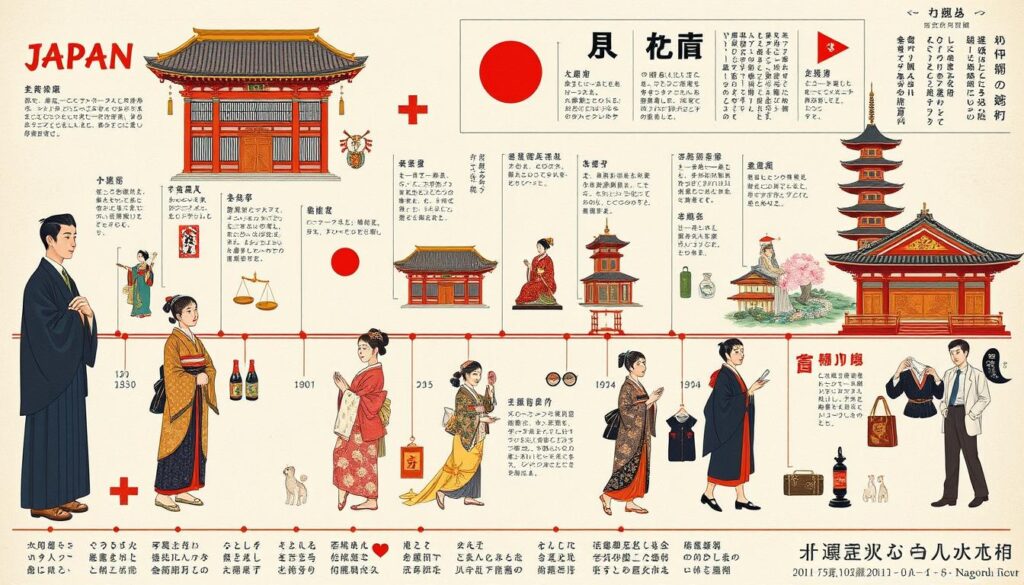
Key elements of the law include:
- Prohibition of intercourse for financial gain: The law directly targets acts of intercourse for monetary purposes, not broader sexual services.
- Protection clauses: While the law prohibits such acts, it also includes provisions to prevent exploitation and provide resources for women to leave prostitution.
- Limited criminal penalties: Interestingly, the law focuses more on preventing prostitution rather than heavily punishing individuals. Both prostitutes and their clients are penalized moderately under this framework.
Notably, this precise wording excludes many other types of sexual activities from being classified as “prostitution.” As a result, the sex industry has adapted to existing legal restrictions, flourishing in ways that avoid technically breaking these provisions. For more on the exact language of the law, you can reference the Prostitution Prevention Law.
Legal Loopholes and Their Implications
The strict focus on intercourse in the 1956 law has unintentionally left openings for other sexual services to operate legally. These loopholes have significantly shaped Japan’s sex industry, allowing certain businesses to provide services that remain within the bounds of the law.
Here are examples of how the industry has adapted:
- “Non-coital” services: Establishments like soaplands, fashion health parlors, and delivery health services offer intimate activities that stop short of intercourse, making them lawful under current rules.
- Creative legal interpretations: The law allows for “companion contracts” or private negotiations, often leaving ambiguity around whether an act is officially “prostitution.”
- Specialized entertainment services: Hosts and hostesses in nightlife districts may offer companionship and flirtation, with private arrangements occasionally entering a gray area.
This adaptability has implications for both the industry and society. On one hand, these loopholes have allowed the sex trade to continue while technically adhering to the law. On the other, they’ve sparked debates over ethical concerns and transparency within Japanese society. For a deeper look at how these loopholes unfold in the modern industry, check out Japanese Legal Loopholes.
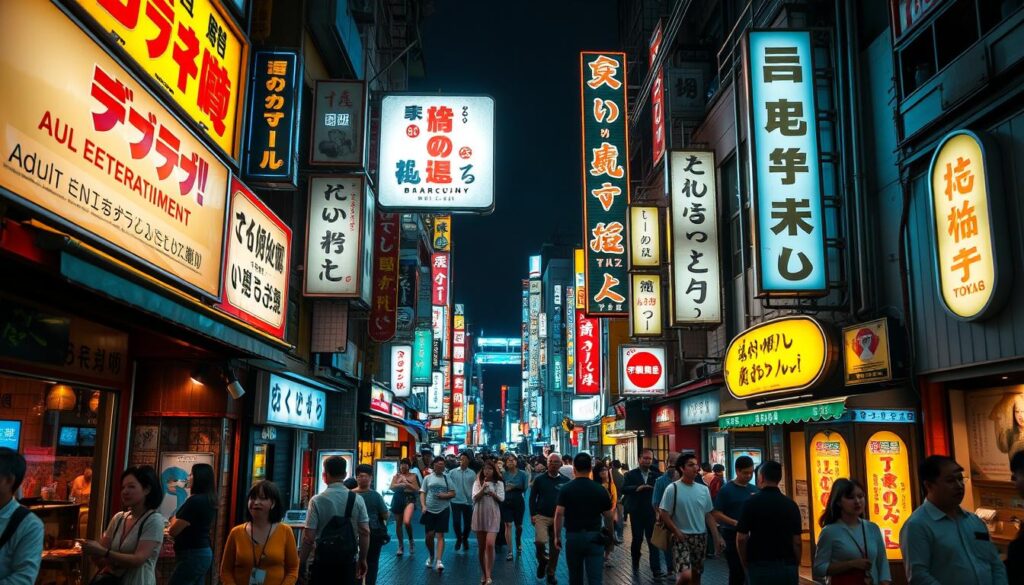
By understanding these provisions and legal gray areas, it becomes clearer how Japan’s unique take on regulating prostitution has led to its current situation.
The Historical Perspective
The origins of prostitution in Japan are deeply linked to societal norms and historical practices. To understand the modern legal status and attitudes, we need to trace back to the nation’s feudal past and how these systems evolved over centuries.
Feudal Japan and the Pleasure Quarters
During the Tokugawa period (1603–1868), Japan saw the establishment of regulated “pleasure quarters.” These zones were set aside in major cities, meant to restrict and manage prostitution while contributing to broader social order. The most famous of these quarters, Yoshiwara in Edo (modern-day Tokyo), became an iconic symbol of art, culture, and entertainment. It was a world enclosed both physically and socially, where courtesans, known as oiran, were elevated as entertainers and cultural figures.
These courtesans were more than just sex workers; they were performers, writers, and artists who hosted lavish gatherings. However, this glamorous image masked the harsh realities of exploitation for many women trapped in the profession. Yoshiwara was a paradox—an artistic hub but also a site of human suffering. The government’s intentional corralling of such activities demonstrated early attempts to control and monetize what was considered a moral gray area at the time.
For a deeper dive into the culture of Yoshiwara, check out “The Yoshiwara Pleasure Quarters” and “The Courtesans of Yoshiwara”.
The Meiji Period and Beyond
The Meiji Era (1868–1912) marked a transitional period in Japan’s history, with rapid modernization and legal reform. Under the Meiji government, the state moved away from the “enclosure” system of the pleasure quarters and officially legalized prostitution to regulate it more effectively. Brothels operated under government-issued licenses, signaling an effort to integrate regulation into the fabric of modernization.
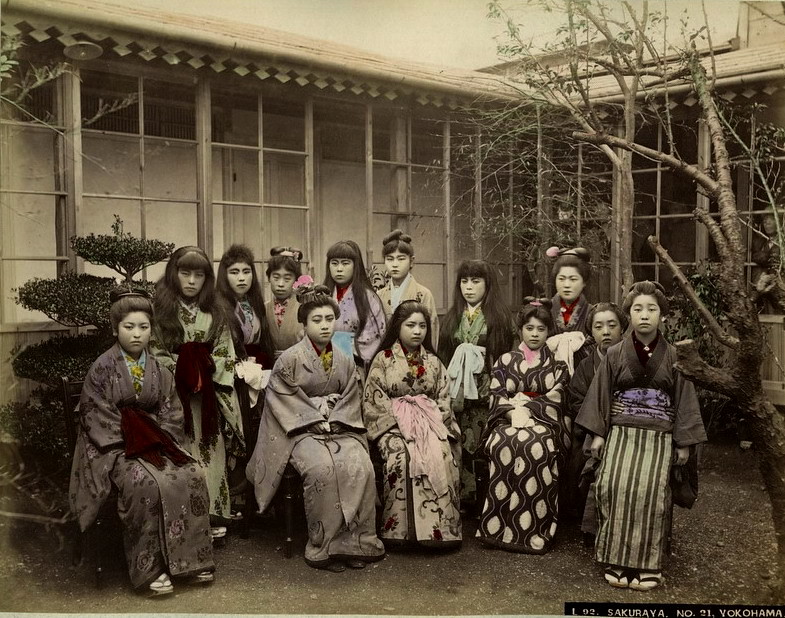
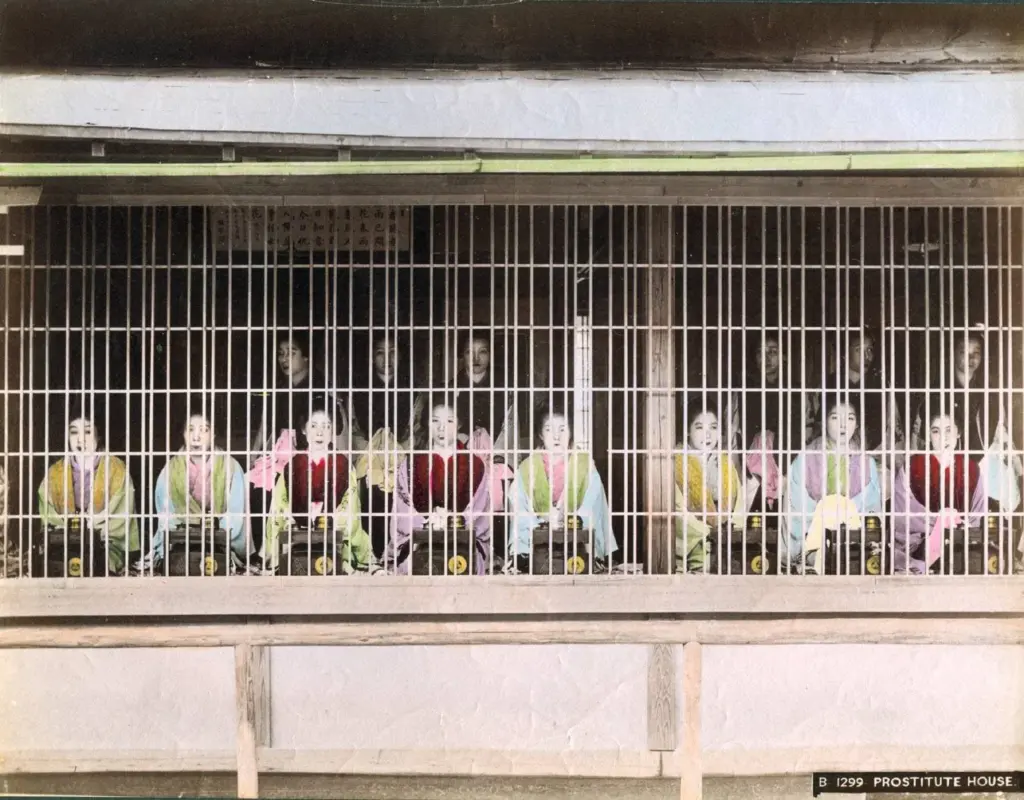
However, there was a significant shift post-World War II during the Allied Occupation. The Prostitution Prevention Law of 1956 came into effect, abolishing the extensive formal systems established under the Meiji period. The law marked a cultural pivot, aiming to redefine Japan’s relationship with prostitution, legalizing only certain sex-related services while placing stricter restrictions on others.
The societal implications of this shift were immense. The abolishment of licensed systems did not end the profession but instead pushed it into more ambiguous spaces, which still influence Japan’s sex industry today. For a historical comparison of the Meiji reforms, see “Women in Meiji Japan” and “Imagining Prostitution in Modern Japan”.
This historical perspective provides vital context for Japan’s current legal stance on prostitution, showing how cultural and economic shifts continue to shape the industry.
The Modern Sex Industry in Japan
Japan’s sex industry is a multi-faceted and deeply ingrained part of its modern culture and economy. While prostitution strictly defined as the act of exchanging sex for money is illegal under the Prostitution Prevention Law of 1956, numerous businesses operate legally within the framework of loopholes. This system creates a complex industry that plays a significant role economically and socially. Here’s a deeper look at specific aspects of Japan’s sex industry.
Non-Coital Sex Services
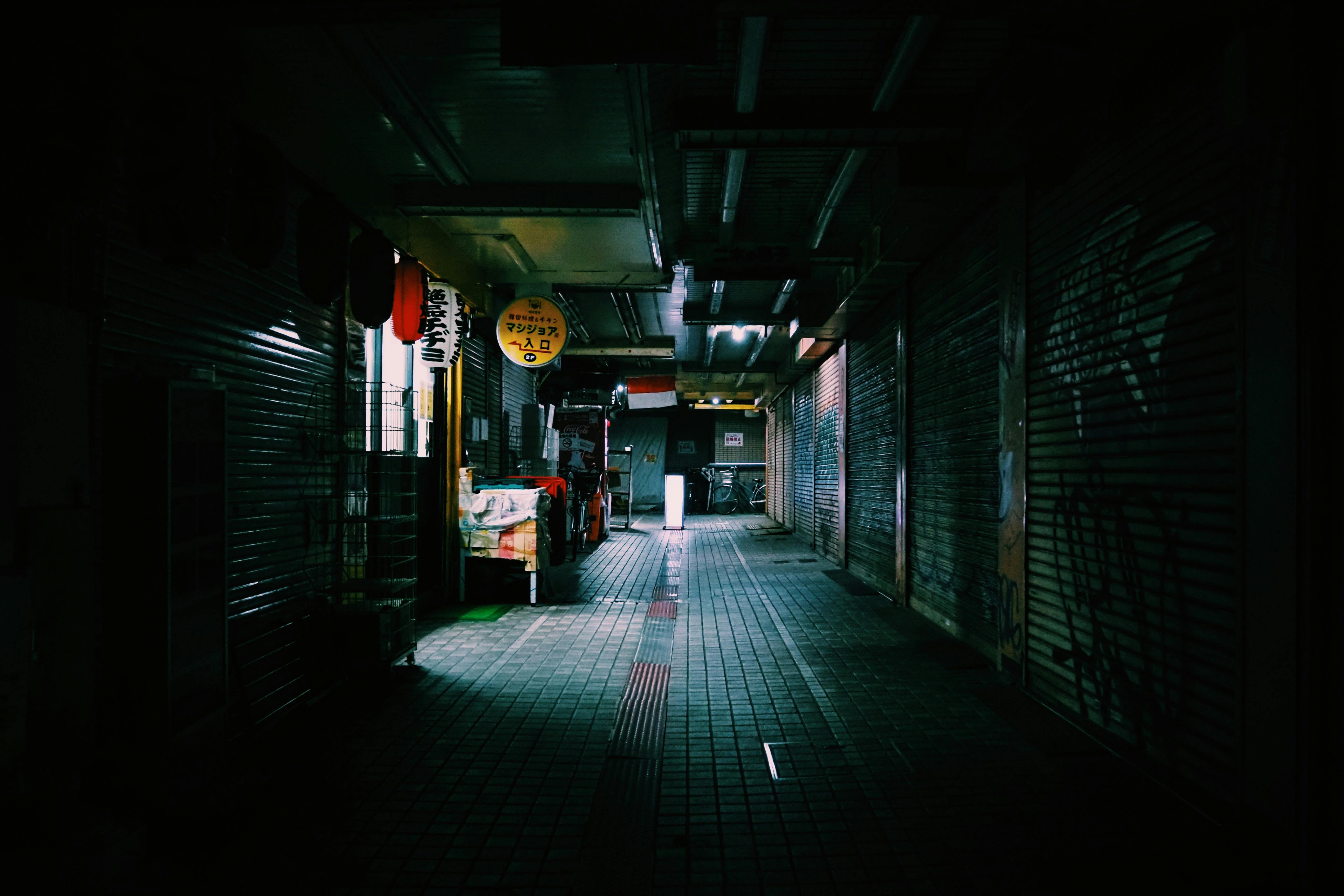
Photo by sugar jet.
Due to the narrow legal definition of prostitution, businesses have adapted by offering a wide range of “non-coital” sex services. These establishments navigate within legal boundaries and often thrive in vibrant nightlife districts such as Kabukicho in Tokyo or Susukino in Sapporo. Here’s what you’ll commonly encounter:
- Soaplands: Perhaps the most well-known, these businesses offer bath and body-washing services, where workers may provide intimate physical contact that stops short of intercourse.
- Fashion Health Parlors: These services advertise massages or other intimate activities without crossing legal lines.
- Delivery Health Services: Similar to fashion health parlors, but the services are performed at hotels or private residences.
Each of these businesses employs careful wording and operational strategies to ensure compliance with laws. The creativity and diversity within this sector reflect Japan’s unique approach to interpreting legal restrictions.
You can learn more about these services on sites like Types of Prostitution in Modern Japan.
Economic Impact and Tourism
Japan’s sex industry is not only a cultural phenomenon but also a major economic player. Reports estimate an annual revenue of upwards of $40 billion, making it one of the most lucrative informal industries in the country. While most of these figures fall under the radar of formal economic systems, the influence on various sectors is undeniable.
- Contribution to Tourism: The sex industry serves as a hidden driver for tourist engagement, particularly in urban hubs like Tokyo and Osaka. Attractions like hostess clubs and erotic massage parlors are marketed subtly but often draw international visitors looking to explore the “pink” side of Japan.
- Job Creation: Directly and indirectly, this industry sustains millions of people—from sex workers themselves to staff in establishments, logistics, and even advertising sectors.
Moreover, the economy surrounding non-coital services supports nightlife entertainment zones, which are hubs for restaurants, bars, and hotels. For a broader exploration of its financial significance, turn to resources like Japan’s Sexnomics.
The economic weight of this sector, much like the neon lights of Kabukicho, is impossible to ignore. At the same time, Japan’s legal framework ensures that this shadow economy remains in a peculiar state of both acceptance and regulation, striking a delicate balance between law and demand.
Controversies and Challenges
Prostitution in Japan operates within a complicated legal and societal framework that raises many ethical and legal questions. While the industry adapts to legal loopholes, deeper societal issues such as exploitation and enforcement bottlenecks persist. These challenges shed light on underlying human rights concerns and the difficulty of maintaining law and order.
Human Rights and Exploitation

Photo by Tima Miroshnichenko.
One of the most pressing controversies with prostitution in Japan stems from its ties to human trafficking and exploitation. Behind the legal smoke and mirrors lies a grim reality for many individuals—especially women and children—who are coerced into the sex trade.
Key concerns include:
- Trafficking: Reports indicate that both Japanese citizens and foreign nationals are forced into labor or sex work. Traffickers often lure victims with false promises of hospitality jobs, only to exploit them in illegal operations. Learn more about trafficking in Japan.
- Child Exploitation: Despite strict child pornography and prostitution laws, online platforms and dark web activities still expose vulnerabilities in Japan’s legal policing. International aid groups have flagged Japan for insufficient protective measures for minors. For detailed insights, read “Hidden in Plain Sight”.
- Lack of Worker Rights: Sex workers in Japan often operate without formal labor protections. While some willingly enter the trade, many find themselves without legal avenues to challenge exploitation, workplace harassment, or unsafe conditions.
A lack of structured protections means that victims are often discouraged from seeking help or reporting abuse. Activists argue for stronger government efforts and reforms to address these ongoing issues.
Enforcement Difficulties
Enforcing anti-prostitution laws in Japan is no simple task. The legal definition of prostitution—restricted to intercourse—grants businesses operating in gray areas considerable leverage to circumvent regulations. Law enforcement faces a maze of ambiguity, which complicates efforts to prevent illegal activities.
Consider the main hurdles:
- Legal Loopholes: The narrow scope of Japan’s Anti-Prostitution Law hinders prosecution. Soaplands, fashion health parlors, or delivery health services are classic examples of businesses skirting legal restrictions while advertising adult services. This gray area makes it challenging for police to crack down on illicit operations. Explore the role of enforcement in more detail here.
- Organized Crime: Many illegal operations are associated with Japan’s infamous yakuza underworld, making enforcement both dangerous and inefficient. Authorities often struggle to untangle the layers of protection that gang-controlled brothels or trafficking operations enjoy.
- Cultural Stigma: Compounding these factors is a cultural reluctance to openly discuss or prioritize prostitution-related crimes. Victims are often hesitant to report abuse out of fear of social ostracism, leaving law enforcement without critical leads or testimonies.
Without comprehensive reforms or collaborative cross-border efforts, Japan continues to grapple with policing an industry that thrives in the shadows. For an in-depth look at the enforcement aspect, check out “Rising Tide of Foreign Prostitution Tours”.
As prostitution laws meet resistance in enforcement, authorities tread a fine line between upholding justice and grappling with societal pressure.
Cultural Perceptions
Understanding prostitution’s legality in Japan requires more than just a grasp of its laws. Cultural attitudes, shaped by centuries of history and shifting societal norms, play a defining role in how the topic is approached in public discourse. From ancient periods to contemporary debates, perceptions have ranged widely, illustrating the complexities of Japanese society.
Traditional and Modern Attitudes
Japan’s historical and modern views on prostitution could not be more contrasting. In the past, prostitution was often seen as necessary and sometimes even noble. During the Edo period (1603–1868), specific areas called pleasure quarters, like Yoshiwara in Edo (modern-day Tokyo), allowed prostitution to flourish in regulated settings. Courtesans, known as oiran, were highly trained in art, conversation, and culture. They became iconic in Japanese literature and art, symbolizing both beauty and sophistication.
Fast forward to contemporary Japan, and you find a society with a more critical, often stigmatized view of prostitution. While the law officially criminalizes sexual intercourse for payment, the surrounding social perception isn’t strictly binary. Some Japanese individuals see the evolving “fuzoku” industry (non-coital sex services) as an unavoidable aspect of modern capitalism. Others, however, perceive it as fueling societal problems like exploitation and declining morality.
So, what led to this shift? Modernization contributed significantly. Post-World War II reforms, including the 1956 Prostitution Prevention Law, aimed to restrict certain practices as Japan rebuilt itself on the foundations of modern governance. This legislative effort aligned with growing influences from Western culture and a desire to move away from feudal-era practices. Over time, this bred cultural stigmas that remain today, where openly discussing prostitution is often taboo.
For further insight into the cultural transition, visit Shifting Views of Prostitution in Japan.
Media Representation and Public Opinion
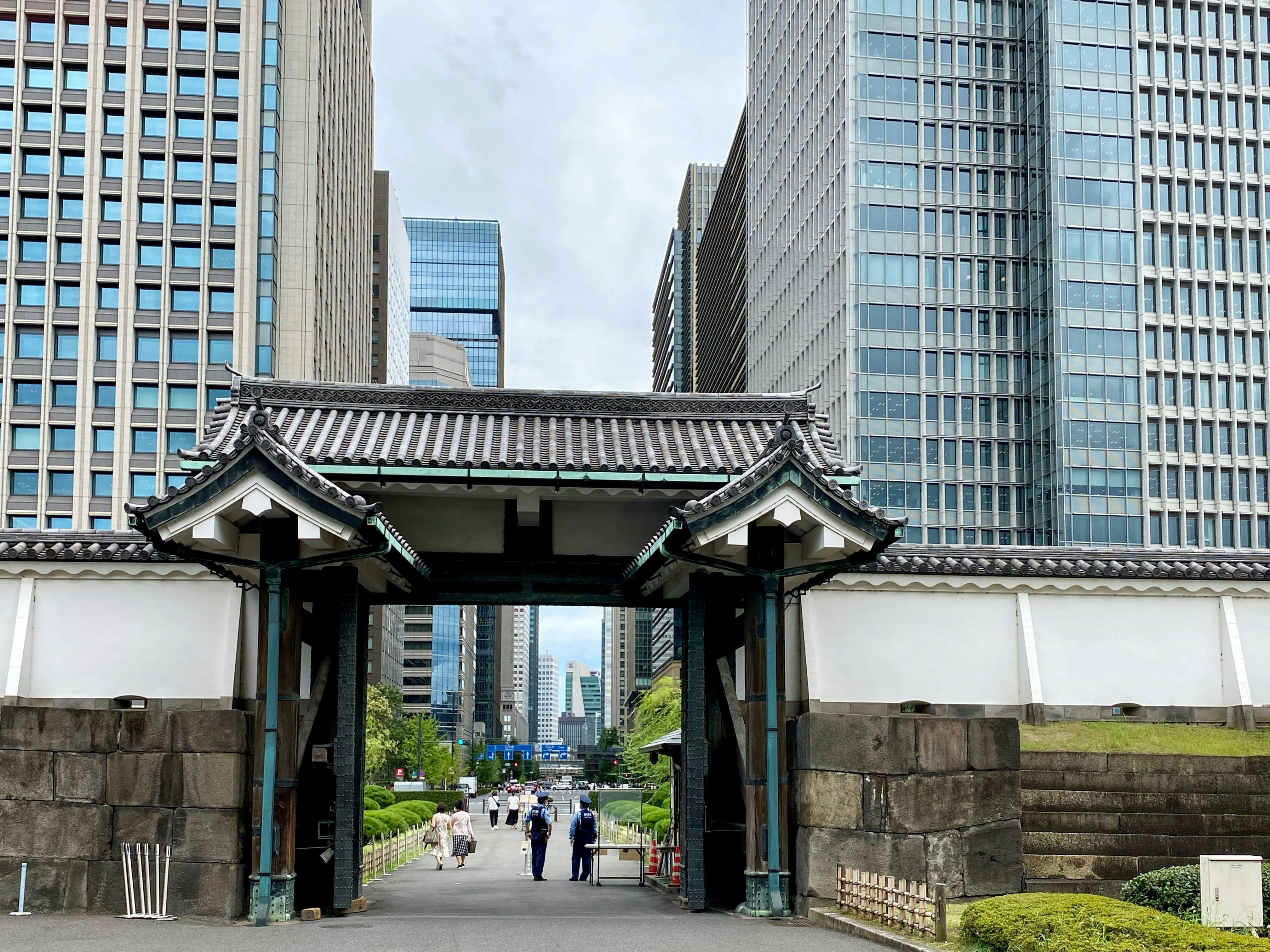
Photo by Natsuko Aoyama.
Media holds a mirror to societal perceptions, and in Japan, its portrayal of prostitution is equally reflective and influential. Mainstream depictions often polarize public opinion. On one side, you have shows and movies sensationalizing the sex industry, emphasizing themes of glamour, rebellion, or survival. On the other, documentaries and investigative reporting expose exploitation, trafficking, and the darker realities.
Television dramas and films often portray hostesses or escort workers as tragic heroines—a trope that simultaneously romanticizes and critiques the industry. For instance, classic Japanese cinema frequently includes narratives exploring the moral dilemmas of sex work against the backdrop of economic despair. These portrayals imbue the industry with an air of complexity, reframing prostitution as not merely transactional, but as deeply woven into human struggles like poverty, loneliness, or ambition.
Public opinion, however, tends to reflect underlying cultural norms. Online forums and discussions often reveal generational divides. Younger Japanese seem more neutral, considering the sex industry as pragmatic, whereas older generations may lean toward disapproval. But one sentiment remains common: an aversion to openly acknowledging prostitution’s presence in daily life. Many prefer to perceive the industry as existing on society’s periphery, much like Japan’s discreet nightlife districts.
For a detailed examination of media narratives, check out Selling Sex on Screen in Post-War Japan.
Is Prostitution Legal in Japan? Conclusion
Japan’s prostitution laws are a mix of strict rules and large loopholes. While intercourse for payment is illegal, many other services thrive within legal gray areas, fueling a billion-dollar industry. This system balances legality, culture, and economics, but also invites debates on ethics and exploitation.
Exploring this topic deepens your understanding of Japan’s unique culture and legal framework. Share your thoughts below or dive further into how Japanese society evolves with these challenges.


